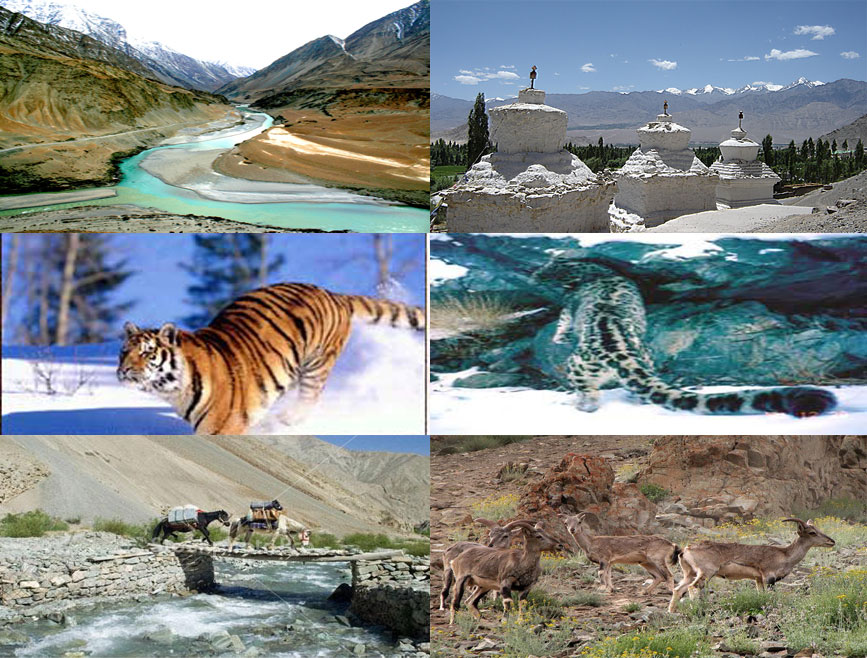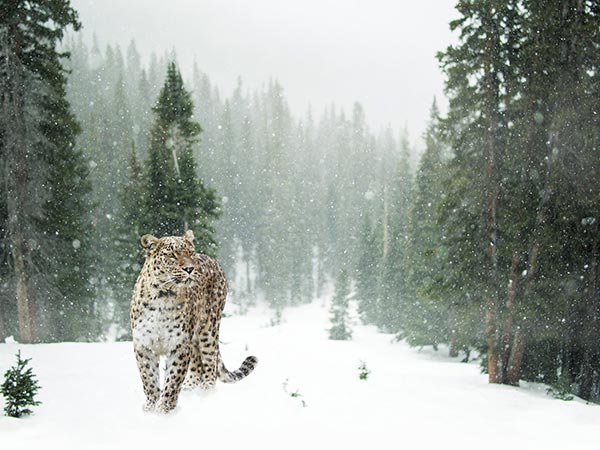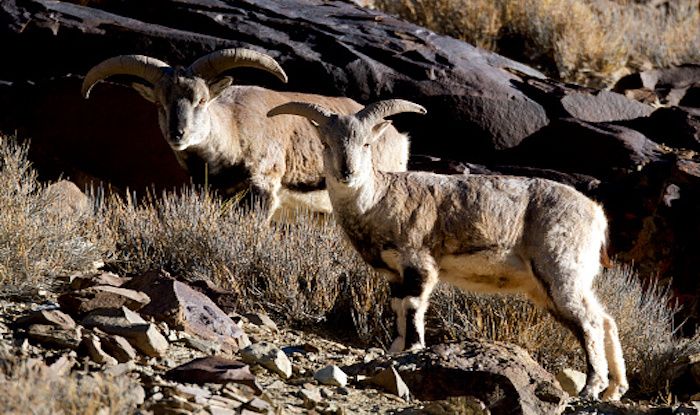Hemis National Park in Ladakh
The Hemis National Park is India’s largest National Park with its area spanning over over 4400 square kilometres. Situated in the Leh district of Ladakh, it also holds the crown of being South Asia’s largest National Park. Home to a number of endangered animals, it is a contiguous protected area in India, that is preceded only by the Nanda Devi Biosphere Reserve in terms of total area. It is also the only national park north of the Himalayas.
The Hemis National Park animals are what make it so attractive to tourists from around the world. It is a high altitude National Park that falls South of the confines of the banks of the Indus River. The area of the National Park comprises the catchments of Markha, Sumdah, and Rumbak as well as parts of the Zanskar range.
Where is Hemis National Park?
The Hemis National Park in Ladakh is situated at a distance of 50 kilometres from the city of Leh. It is India’s protective area within the Palearctic. It surrounds the Changthang Wildlife Sanctuary, going northeast from Hemis and the proposed cold desert conservation area of Tso Lhamo in North Sikkim.
It was founded in 1981 giving protected status to the catchments of Rumbak and Markha. At the time, the area of the park was 600 square kilometres. Thereafter it grew to 3500 square kilometres after acquiring neighbouring lands in 1988. Further in 1990, when more area was incorporated into the national park territory, the area grew to 4400 square kilometres making the Hemis National Park, the largest national park in South Asia.
Also Read: Indus River in Ladakh
Hemis National Park : Flora

Due to the minimal precipitation at the bottom of the valley, there are mainly dry forests that thrive in this area. On your visit, at the lower elevations, you will find a horde of Juniper trees, populus-salix forests, and subalpine dry birch – fir. There is also a decent population of Alpine and Steppe trees.
As you move towards the moist upper mountain slopes, you will find flourishing Alpine vegetation such as Anemone, Carex, Delphinium, Gentiana, Kobresia, Lloydia, Thalictrum, and Veronica. A report led by CP Kala found the Hemis National Park housing 15 rare and endangered medicinal plants including Hyoscyamus niger, Ferula jaeschkeana, Ephedra gerardiana, Bergenia stracheyi, Artemisia maritima, Arnebia euchroma, and Acantholimon lycopodioides
Hemis National Park : Fauna

The Snow Leopard: The Hemis National Park, famous for the snow leopard, is the most densely populated protected area for the animal. There are around 200 snow leopards in Hemis, particularly found in the area of the Rumbak catchment. Tourists from around the globe arrive at the national park in hopes of getting a glimpse of the majestic, endangered animal. The Great Tibetan Sheep (Argali), The Blue Sheep (Bharal), and The Ladakhi Urial (Shapu) along with livestock serve as main prey for the Snow Leopard.
The Hemis National Park houses 16 mammal species and 73 bird species. The mammals that reside here include but are not limited to the Tibetan Wolf, the Red Fox, the endangered Eurasian Brown Bear, the Himalayan Marmot, the Himalayan Mouse and the Mountain Weasel.
Also Read : Leh Ladakh Market – Travel and Shopping Guide
Hemis National Park : Birdwatching

The Hemis National Park is a great site for avid birdwatchers. Enthusiasts can foray into the forest to spot Black-winged Snowfinch, Blyth’s Swift, Brown Accentor, Chukar, Fire-fronted Serin, Himalayan Snowcock, Red-billed Chough, Robin Accentor, Streaked Rosefinch, and Tickell’s Leaf Warbler to name a few.
Birds Of Prey: The park also houses several predatory birds like the Lammergeier Vulture, the Himalayan Griffon, and the Golden Eagle among others.
Attractions Within the Hemis National Park
On top of taking in the natural beauty that is going to surround you when you visit the park, there are a few other attractions you can enjoy while there.
Hemis Monastery
One of the richest monasteries of Ladakh and famous for hosting the Hemis Festival, the Hemis Monastery is around 45 kilometres from the city of Leh. The monastery hosts the festival over 2 days and its beginning is marked by the unfurling of Thangkas or Buddhist paintings and dance performances by monks in masks (Chhams).
Ganda La
Ganda La or Kanda La unites Markha Valley and Leh. It is a high mountain pass that is frequently used by the locals to travel and is located within the park premises itself.
Activities at the Hemis National Park
There are a lot of activities that you can enjoy on your visit to the Hemis National Park. The visit can be especially fun for adventure enthusiasts. With a plethora of activities like camp stays, trekking, hiking, photography and birdwatching, the park can become so much more than just a nature walk.
Best Time to Visit
The best time to visit the Hemis National Park is between May and September when the snow has melted and the natural beauty blooms in all its glory.
Entry Fee
You can enjoy all that the National Park has to offer for a nominal fee of Rs. 20 for Indian citizens and Rs. 100 for foreign tourists. The park is open to visitors from 9am to 5pm on all the days of the week.
Frequently Asked Questions
1. When is the best time that you can visit the Hemis National Park?
A: A visit between May and September will make for a wonderful trip to the Hemis National Park.
2. What do you have to pay to enter the Hemis National Park?
A: Indian citizens need to pay Rs. 20 and foreign tourists need to pay Rs. 100.
3. What is the distance to Hemis National Park from Leh?
A: You need to travel around 45 kilometres from the city of Leh to reach Hemis National Park.
4. What are the timings for Hemis National Park?
A: The park is open to visit on all seven days of the week between 9am and 5pm.

Recent Comments